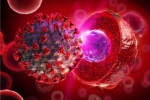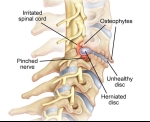Home »
Blog » Pain Management
| Stem Cell, PRP, Acupuncture in Queens & Long Island, New York
Pain Management | Stem Cell, PRP, Acupuncture in Queens & Long Island, New York
Recently, stem cell transplantation has been frequently applied to the treatment of pain as an alternative or promising approach for the treatment of severe osteoarthritis, neuropathic pain, and intractable musculoskeletal pain which does not respond to conventional medicine. Stem cell-based therapies have been realized to be a potential treatment option for articular cartilage repair in patients with knee osteoarthritis, neuropathic pain, and intervertebral disc disease.
Read more
As you may already know through personal experience, back pain can be uniquely complex and difficult to diagnose and treat. There are many types of back pain and a wide range of treatments that may or may not work for the same condition. Here we outline several insights that you may find helpful in your journey to finding and participating in a treatment approach that works for you.
Back Pain Is A Complicated, Personal Experience - The intensity and manageability of pain are very different for every person. For example, one person with a herniated disc may experience excruciating pain while another person with the same condition has no symptoms at all. Similarly, a muscle strain can range from mild to debilitating.
Read more
What Are the Benefits of CBD Cream? CBD cream can be used to treat a very specific area of your body that’s experiencing pain. If you take CBD oil for a sore muscle, you’ll get a general pain relief throughout your entire body, but the muscle pain itself may not completely disappear. On the other hand, if you apply CBD cream to your sore muscle, all of CBD’s pain-relieving effects will focus on that one area. It’s like taking an aspirin for a sore muscle versus getting a massage. With the aspirin, you get general pain relief, but the muscle may still be tight and sore. But with the massage, you can focus on the muscle until it is relaxed and pain-free.
Read more
Although many countries including the USA, China, Italy, UK, France, Spain, Germany, Turkey, Iran, Brazil, and Jordon have proposed stem cell use for COVID‐19 patients, only a limited number of stem cell‐based studies are available currently to deduce solid limitations or potential of such therapy for COVID‐19. A study recently conducted in Beijing's YouAn Hospital, China, from January 23, 2020 to February 16, 2020 suggests a possible role of MSCs administration in COVID‐19 treatment (Leng et al., 2020).
Read more
When a doctor says you have a pinched nerve in your neck or back, it typically means that a compressed or inflamed nerve root is sending pain, tingling, numbness, and/or weakness into the arm or leg. These symptoms may be caused by a herniated disc, bone spur, or other spinal degeneration or injury. Let’s take a look at how long a pinched nerve and its related pain typically lasts.
Read more
We’re probably stating the obvious here, but the pain is a drag! Whether it’s chronic (no pun intended) or acute, pain can make your life unbearable. Up until recently, the solution for a pain that just won’t go away has been powerful opioids. These drugs often cause more problems than they’re worth. Thankfully, a new, non-addictive treatment for pain is taking the medical community by storm: CBD cream.
Read more
Lower back pain may occur while sitting or standing for a prolonged period. Pain may also occur when there is an active spinal movement, such as attempting to stand up and/or bend down. Lower back pain can be an intermittent discomfort or a continuous ache. Sometimes, the pain may be particularly severe when you sit down, rise from a chair, or straighten your back after bending forward. While in most cases the underlying cause of the pain can be identified, sometimes back pain may be non-specific with no identifiable cause.
Read more
The use of cannabis and medical marijuana is the most popular new scoop in various parts of the world. The benefits and favors that cannabis provide are making the people overwhelmed all over the world. Recent researches done on cannabis are taking the medical industry with a storm. However additional studies and work are still needed in the field of cannabis to unveil its qualities.
Read more
Having pain under or near your shoulder blade the triangular bone that forms the back of your shoulder may limit arm movements and interfere with daily activities. This pain can range from being sharp or burning, such as between the spine and shoulder blade, to tender or achy across the shoulder or upper back. Some possible causes of this pain are discussed below.
1. Poor Posture - Prolonged sitting with poor posture may cause your spine to undergo structural changes that eventually cause pain underneath the shoulder blade. Hunching your back, tilting your head down, or sitting to one side while working behind a desk or reading from a cell phone, for example, can weaken your muscles and place pressure on spinal discs, muscles, and ligaments. This routine imbalance can contribute to upper back pain.
Read more
CBD typically stays in your system for 2 to 5 days, but that range doesn’t apply to everyone. For some, CBD can stay in their system for weeks. How long it hangs around depends on several factors.
What affects how long it stays in your system? There are a few variables to consider when thinking about how long CBD stays in your system.
How Much You Use - As with most other substances, the higher the dose, the longer CBD will stay in your system.
Read more
Love this Post? Spread the World






















